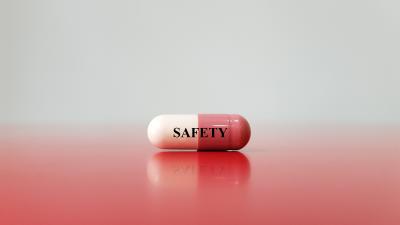Focus Area: Product Safety Surveillance
Importance to FDA
FDA receives many reports about safety or effectiveness of FDA-regulated products each year. For many FDA-regulated medical products, due to limitations of pre-market clinical investigations (e.g., size, follow-up timing, included populations), safety data often need to be continuously collected postmarket. Postmarket adverse events may affect regulatory decision-making and actions, such as requiring safety-related labeling changes and issuing safety communications. To protect the health of the public, it is important for FDA to identify potential safety signals as early as possible using postmarket surveillance. To evaluate a safety signal, it may be necessary to understand the mechanisms that may underlie the observations and, in some cases, conduct or request additional clinical and epidemiological studies.
FDA is working to improve ways to identify new safety signals with increased precision in decreased time. Some of the approaches being evaluated for feasibility rely on incorporating artificial intelligence (AI), real-world evidence (RWE), and leveraging data from a combination of active and passive safety surveillance systems listed below.
- The FDA Sentinel System (Sentinel) is an active surveillance system that uses routine querying tools and pre-existing electronic healthcare data from a distributed data network to detect safety signals and evaluate the safety of FDA-regulated medical products.
- The Biologics, Effectiveness and Safety (BEST) system, is an active surveillance system which builds and expands upon activities undertaken as part of previous FDA collaborative studies for biologic product safety and effectiveness. BEST is a multi-site set of databases that accrues data on over 100 million individuals and uses a distributed data network, a common data model, data curation, and different types of analytical tools.
- MedWatch is the FDA’s medical product safety reporting program for health professionals, patients, and consumers. MedWatch receives reports from the public and when appropriate, publishes safety alerts for FDA-regulated products such as: prescription and over-the-counter medicines, biological products, medical devices, combination products, special nutritional products such as dietary supplements, cosmetics such as moisturizers and shampoos, and food such as beverages and ingredients added to foods.
- The FDA Adverse Event Reporting System is a passive reporting database for healthcare professionals, patients, consumers, manufacturers and others to report adverse events, medication errors, and product quality complaints. The database is designed to support the FDA's post marketing safety surveillance program for drug and therapeutic biologic products.
- The Vaccine Adverse Events Reporting System is a passive reporting database administered by FDA and Centers for Disease Control and Prevention (CDC), that contains adverse event reports associated with licensed vaccines.
- FDA uses the Center for Food Safety and Applied Nutrition (CFSAN) Adverse Event Reporting System to receive reports of adverse events (AEs) and product complaints (PCs) pertaining to FDA-regulated foods, dietary supplements, and cosmetic products.
- Through the Safety Reporting Portal, FDA gathers information from the public (e.g., consumers, healthcare professionals, manufacturers) on the risks, problems, or unexpected health issues related to pre-market or marketed human drugs and biologics, human or animal foods, animal drugs, tobacco products, and dietary supplements.
- FDA Manufacturer and User Facility Device Experience Database (MAUDE) contains reports of adverse events involving medical devices.
- The Medical Product Safety Network (MedSun) is an adverse event reporting program which fosters an important partnership between clinical sites and FDA
- The National Evaluation System for health Technology (NEST) is a voluntary data network of collaborators able to efficiently consolidate Real-World Evidence (RWE) from clinical registries, electronic health records, medical billing claims, patient-mediated data, and other sources to inform medical device development and evaluation, and to support regulatory decision-making throughout the total product lifecycle (TPLC).
Examples
FDA develops and uses multiple techniques to monitor for known and identify new potential safety concerns.
- Evaluating spontaneous adverse event reports (including medication errors), disease and product exposure registries, and pharmacoepidemiology and human factors studies. Other approaches include developing databases and analyzing platforms that incorporate information from the FDA Adverse Event Reporting System reports, literature, poison centers, toxicology reports, drug use data, and Sentinel.
- Evaluating device related adverse event reports submitted through the MDR and MedSun reporting systems for medical devices, condition and product-related device registries and registry networks, the National Evaluation System for health Technology (NEST), mandated post market studies, and the medical literature to assess for new device performance issues. In addition, developing artificial intelligence and machine learning (AI/ML) platforms to surveil FDA databases and public sources for relevant potential safety issues.
- Leading several studies, as part of Sentinel, in response to the COVID-19 pandemic. Literature has suggested that patients with COVID-19 may be at risk of developing thromboembolic complications (e.g., movement of a blood clot to a secondary location), although there is a knowledge gap on the incidence, determinants, and consequences of these events. FDA is leading an epidemiologic study with the Sentinel System to assess the frequency of arterial and venous thromboembolic events and their consequences among patients with COVID-19 and evaluate risk factors for these events. This information will help to inform thromboprophylaxis strategies for reducing the risk of these adverse outcomes.
- Investigating data submitted through the Reportable Food Registry enables FDA to partner with industry and U.S. states to investigate and mitigate risks associated with adulterated food products, so that corrective actions can be quickly implemented.
- New analytical methods developed by FDA for detection of the carcinogen NDMA in ranitidine drug products indicated actual levels were much lower than previously reported. A randomized clinical trial was conducted and showed that ranitidine does not convert to NDMA in humans. In addition, supporting in vitro experiments that simulated human gastric fluid also showed that ranitidine did not convert to NDMA under physiological conditions. Based in part on this research, FDA may consider allowing ranitidine-containing products back on the market if they are proven to be stable, with low, acceptable amounts of NDMA that do not increase during storage.
| Minority Health and Health Equity | Women’s Health | Maternal Health | Pediatric Health |
| Oncology | Rare Diseases | One Health Initiative |
Research Capabilities, Tools, and Resources
| Research Management and Collaborations | Technology Transfer and Public-Private Partnerships | Physical Standards and Reference Materials | Intramural Grant Programs | Extramural Funding Mechanisms |
Scientific Education, Training, and Communication
| Fellowship and Training Opportunities | Professional Development and Continuing Education | Communication and External Meetings |
Infrastructure
| Facilities and Shared Resources | Safety and Compliance |
| Office of the Chief Scientist | Contact Us: FARS@fda.hhs.gov |



